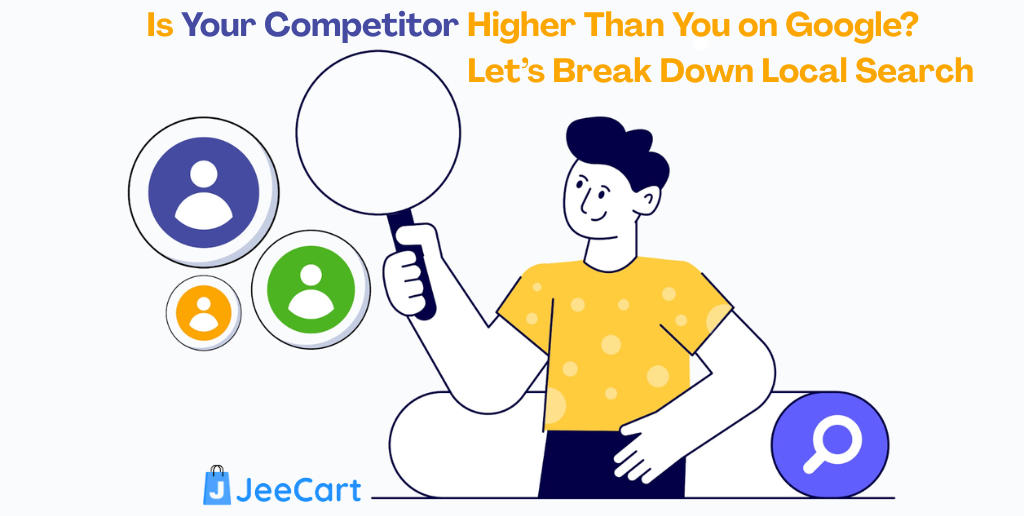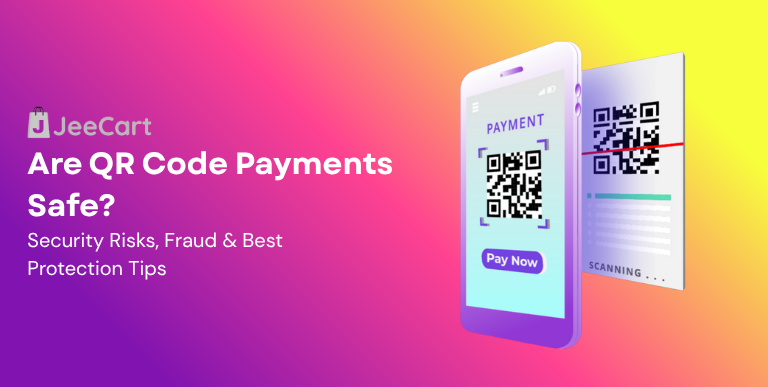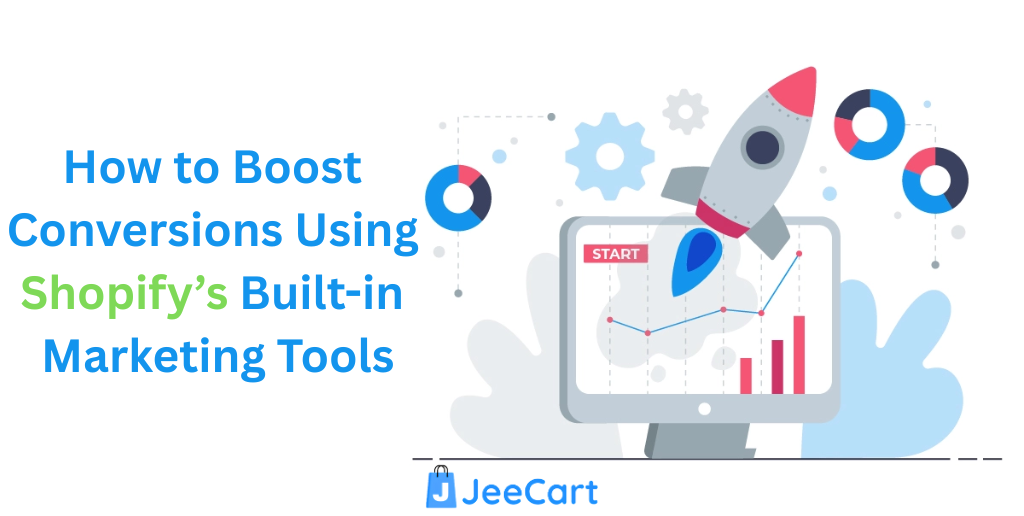You’re not alone if you’re scrolling through a store, adding items to your cart—a trendy jacket, a quirky coffee mug, or that must-read book everyone’s talking about.
Then life happens. Your phone buzzes, dinner calls, & you just leave the cart without taking action.
Here’s the surprising part: this happens to 7 out of 10 shoppers. That’s a lot of carts left behind, full of potential.
The good news? It’s not the end of the story. With a friendly reminder, a happening discount, or a smoother checkout process, those carts can turn into completed orders.
In this article, we’ll explore simple, effective ways to recover abandoned carts and boost your sales. Let’s get started!
What is Ecommerce Cart Abandonment?
Ecommerce Cart Abandonment happens when shoppers add items to their cart but leave before completing the purchase. It’s a common issue caused by factors like unexpected costs, a lengthy checkout, or second thoughts. Reducing cart abandonment is crucial for boosting online sales and improving customer experience.
17 Proven Strategies to Reduce Ecommerce Cart Abandonment
It’s that moment when a shopper adds items to their cart—those trendy sneakers, the perfect coffee grinder, or even a gift they spent hours picking out, only to disappear before clicking “Buy Now.” Frustrating, right?
You don’t have to just watch those potential sales slip away.
With the right strategies, you can turn abandoned carts into completed purchases and watch your conversion rates soar.
Ready to take control? Let’s dive into 17 powerful tips to reduce cart abandonment and keep your customers coming back.
1. Simplify the Checkout Process
Quick Fix: A complicated checkout is one of the top reasons shoppers leave.
How to Fix It:
- Streamline the process into a single page or reduce the number of steps.
- Limit form fields to only the essentials.
- Offer guest checkout (skip the “create an account” hurdle).
- Use autofill to make it faster for returning customers.
Why It Works:
Did you know that 26% of shoppers leave because checkout is too long or clunky? The smoother the process, the more likely they’ll stick around to complete the purchase.
2. Let Shoppers Know They’re Almost There
Quick Fix: Nobody likes wandering through an endless maze, especially during checkout. Show shoppers exactly where they are with a progress bar.
How to Fix It
Add a clear and simple progress indicator at the top of the checkout page. Something like:
- Step 1 of 3: Shipping
- Step 2 of 3: Payment
- Step 3 of 3: Review & Complete
It’s like a map for checkout—no one gets lost, and they always know how close they are to the finish line.
Why It Works: Uncertainty is a dealbreaker. Progress bars reassure shoppers that they’re almost done, reducing anxiety and increasing the likelihood they’ll hit “Place Order.” Plus, who doesn’t love the satisfaction of seeing that final step light up?
3. Offer Multiple Payment Options
Quick Fix: Not everyone likes to pay the same way. Cater to different preferences.
How to Fix It
Offer a variety of payment methods such as credit cards, PayPal, Apple Pay, Google Pay, and even installment payment plans like Klarna or Afterpay. You could even add local payment options for international customers.
Why it works: According to Baymard Institute, 6% of shoppers abandon carts because their preferred payment method isn’t available.
4. Provide Clear Shipping Information
Quick Fix: Hidden shipping fees are the villain of online shopping. No one likes surprises—especially when they come with a price tag.
How to Fix It
Be upfront. Display shipping costs early on, even before the checkout process.
Always consider:
- Free shipping for orders over a set amount.
- Flat-rate shipping to keep things predictable.
Why It Works: Imagine you’re all set to buy, and boom—unexpected fees pop up. That’s why 60% of shoppers bail right there. Transparency builds trust, and trust keeps carts from being abandoned. Plus, “Free Shipping” is basically the magical word of ecommerce.
5. Enable Easy Cart Editing
Quick Fix: Let users make quick adjustments to their cart without hassle.
How to Fix It
Allow users to easily remove or modify quantities of items in their cart before checkout. Provide visible “edit” or “remove” buttons next to each item in the cart.
Why it works: Users often abandon carts because they accidentally added the wrong item or quantity. Giving them control at this stage can help prevent frustration.
6. Display Trust Signals
Quick Fix: Build trust with security badges and customer reviews.
How to Fix It
Display SSL certificates, payment security icons (like Visa, PayPal, or MasterCard logos), and trusted third-party reviews prominently on your checkout pages.
Why it works: Trust signals increase confidence and reduce hesitation.
In fact, 17% of cart abandonments are due to security concerns.
7. Use Exit-Intent Pop-ups
Quick Fix: Catch them before they vanish! Exit-intent pop-ups are like your store’s last-minute “Wait, don’t go!” moment.
How to Fix It
When a shopper’s mouse drifts toward the browser’s close button, hit them with a well-timed pop-up.
- Offer a discount, like “Here’s 10% off if you complete your order now!”
- Remind them of the treasures they left behind: “Your cart is waiting for you!”
Why It Works:
This little move can save 10-15% of abandoned carts—especially if there’s a tempting offer attached. It’s like the digital equivalent of waving a dessert tray at someone walking out of a restaurant. Hard to resist, right?
8. Send a “Hey, You Forgot Something!” Email
Quick Fix: Don’t let those abandoned carts gather dust—send a friendly reminder to bring them back.
How to Fix It
Set up automated emails to swoop in within an hour or two after a cart is abandoned. Keep it friendly and casual, like:
- “Oops! Looks like you left something behind…”
- Include images of the items they were eyeing.
- Add a clear, compelling CTA like “Complete Your Purchase” or “Grab It Before It’s Gone!”
Why It Works: 10-15% of abandoned carts can be recovered with a simple email nudge. Personalizing it with product images can increase the chances even more. It’s like sending a gentle reminder that, hey, your cart is still there, just waiting for you!
9. Give Them a Deal They Can’t Resist
Quick Fix: Nothing gets shoppers to act faster than a great deal with a time limit!
How to Fix It
Send a playful, urgent email like:
- “Hurry! Complete your purchase in the next 24 hours and save 20%!”
- Add a countdown timer, so they know the clock’s ticking—like a race to the finish line!
Why It Works: Urgency creates excitement! When shoppers see that limited-time discount, it taps into that fear of missing out (FOMO), and suddenly, they’re in a rush to buy. It’s like saying, “Hey, don’t wait too long, or this deal might disappear!”
10. Provide Free Returns
Quick Fix: Reduce the risk for customers by offering easy returns.
How to Fix It
Offer free returns or exchanges to ease the customer’s mind about their purchase. Make sure to clearly communicate this on the product pages and checkout process.
Why it works: Free return policies have been shown to reduce cart abandonment, as customers feel more confident purchasing knowing they can easily return products.
11. Use Behavioral Targeting
Quick Fix: Personalize the shopping experience based on how users behave.
How to Fix It
Leverage behavioral data to tailor the experience. If a customer frequently browses a particular category, highlight more of those items or offer discounts related to their interests.
Why it works: Personalizing based on user behavior creates a more relevant shopping experience, which can boost conversion rates. When customers see products they’re actually interested in, they’re more likely to make a purchase.
12. Simplify Account Creation
Quick Fix: Don’t lock your customers into an account creation journey if they’re not ready.
How to Fix It
Provide a hassle-free guest checkout option. If you must nudge customers toward signing up, spotlight the perks — faster checkouts, loyalty rewards, and easy order tracking.
Make it about their convenience, not a hard sell.
Why It Works: Forcing account creation can feel like a roadblock, and customers often abandon their carts in frustration.
Give them the option to breeze through checkout, and let them decide if creating an account is worth it down the line. This way, you build trust without pressure!
13. Optimize for Mobile Devices
Quick Fix: Ensure your checkout is seamless on mobile.
How to Fix It
Make your site fully responsive with easy-to-tap buttons, a simplified checkout process, and lightning-fast load times.
Why it Works: With over half of all online shopping happening on mobile, a smooth, mobile-optimized site can dramatically reduce cart abandonment and increase conversions.
A responsive design not only improves user experience but also boosts your site’s credibility and trustworthiness!
14. Offer Multiple Currency Options for International Shoppers
Quick Fix: Don’t forget about global customers.
How to Fix It Allow international customers to shop in their preferred currency, especially if you ship to multiple countries. Add a currency switcher to your site, and display prices in local currencies.
Why it works: If your store is accessible to international shoppers, offering localized pricing improves their experience and reduces the likelihood of abandonment due to currency confusion.
15. Display Inventory Levels
Quick Fix: Let customers know if an item is almost out of stock.
How to Fix It Make certain your website is completely responsive and tailored for mobile visitors. This features large, easy-to-press buttons, an efficient checkout procedure, and quick loading times.
Why it works: With more than half of online shopping occurring on mobile devices, a mobile-optimized site can greatly lower abandonment rates.
16. Provide Clear Contact Options
Quick Fix: Be there when customers need help.
How to Fix It Enable international customers to make purchases in their chosen currency, particularly if you deliver to several countries. Incorporate a currency converter into your website and showcase prices in local currencies.
Why it works: Making your store available to global customers, by providing localized pricing enhances their experience and decreases the chances of abandonment caused by currency misunderstandings.
17. Retarget Abandoners with Ads
Quick Fix: Remind shoppers about their abandoned carts through ads.
How to Fix It
Show low-stock alerts (e.g., “Just 3 remaining in inventory”) on product pages and within the shopping cart. This generates a feeling of immediacy.
Why it works: The fear of missing out (FOMO) can prompt consumers to make quick decisions and complete their purchase to avoid the chance of missing something valuable.
Conclusion
Decreasing cart abandonment isn’t a universal fix, yet by applying these tactics, you can begin to notice enhancements in your conversion rates.
Every action you take to improve user experience, foster trust, and resolve possible issues will assist in converting more abandoned carts into final sales.
So go ahead—pick a few of these strategies, implement them today, and watch your sales grow!
FAQS
Should I offer discounts to cart abandoners?
Providing a discount can be a useful strategy, but apply it judiciously. Sending an email with a “reminder + discount” is an excellent method to regain customers without providing discounts too soon.
How does the checkout process affect cart abandonment?
A complex or prolonged checkout procedure is a major deterrent for customers. Streamlining the process and enabling guest checkout can greatly lower abandonment rates.
What is an abandoned cart email?
An abandoned cart email serves as a reminder for customers who placed items in their cart but did not finalize the transaction. It's a method to subtly encourage them to return to your shop.
How long after abandonment should I send a recovery email?
Timing is crucial! It is advisable to send the initial email within one to two hours of the abandonment. A reminder can be dispatched 24 hours later, followed by a concluding notice after several days.
Does retargeting ads help with cart abandonment?
Absolutely! Retargeting ads (the ads that follow you around) can assist in bringing customers back to your site by displaying the precise items they abandoned.







